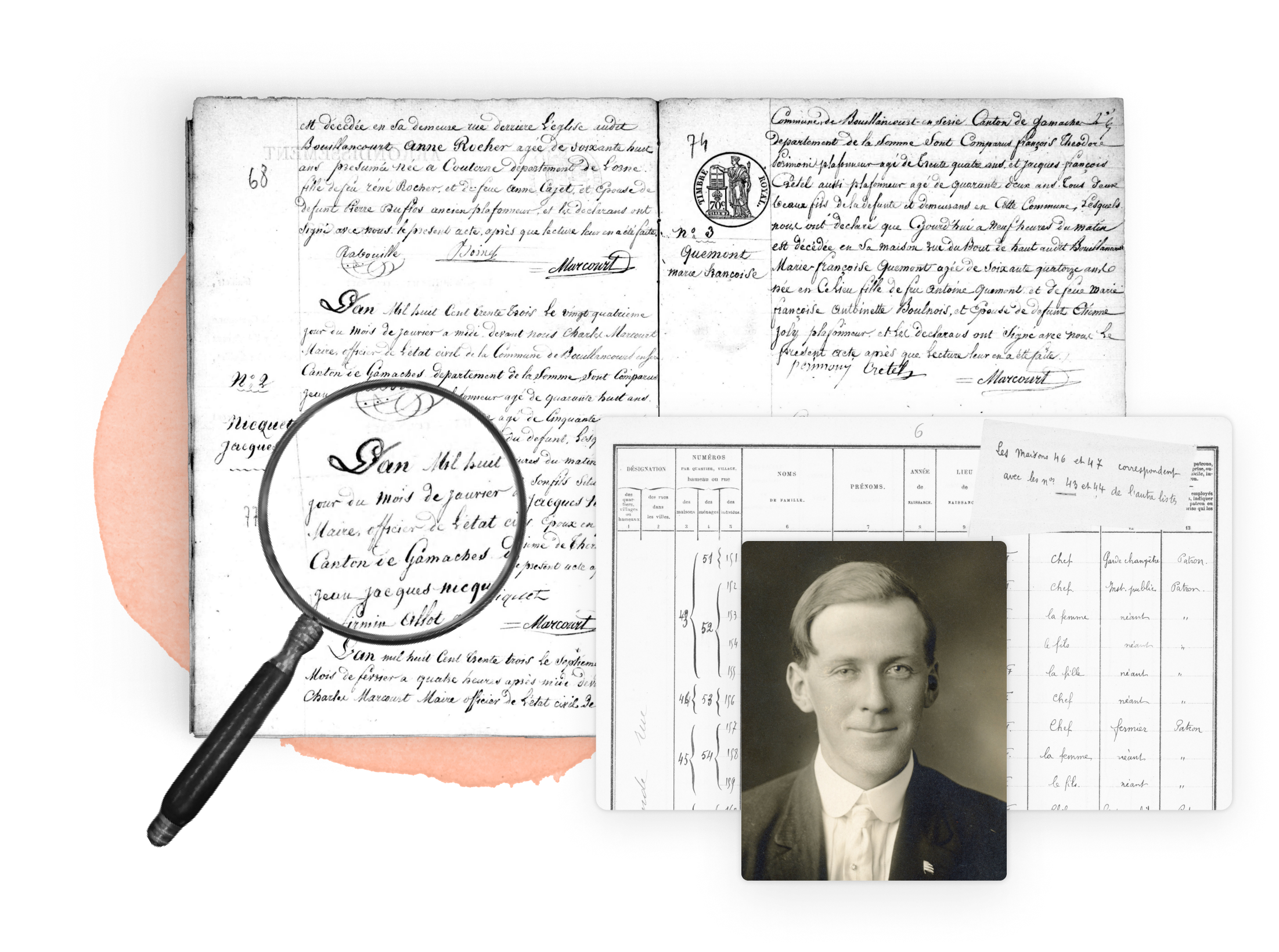Arabic surnames are the surnames which are used by people of Arab ethnicity, primarily living on the Arabian Peninsula, and wider parts of the Middle East and North Africa, such as Egypt. Because Arabic surnames were so intensely associated with Islam during the Middle Ages, wherever Islamic culture and power extended, elements of Arab surname practices were often applied. Thus, Arabic surnames are found in one form or another in Muslim majority countries, from Morocco in the west, to Indonesia in the east, and from Somalia north to Kazakhstan. Their prevalence in these Muslim countries depends on the history of the region. For instance, Arabic surnames are very common in Malaysia and Indonesia.
History of arabic surnames and naming conventions

Arabic surnames and naming conventions are based around both patronymic and matronymic constructions, as well as elements which designate a person’s long-term kinship group or heritage. Take, for example, Faisal I, King of Iraq from 1921 to 1933 and the leader of the Great Arab Revolt against Ottoman rule in the Middle East during the First World War, famously depicted by Alec Guinness in David Lean’s Lawrence of Arabia.[1] Faisal’s full name was Faisal bin Hussein bin Ali al-Hashemi. As ‘bin’ means ‘son of’ and the ‘al-’ element denotes one’s longer line of descent, his name transliterates as ‘Faisal, son of Hussein, son of Ali, of the House of Hashemi’. These surnames indicate that his father was Hussein, his grandfather was Ali and he was a scion of the Hashemite royal family which also ruled the Kingdom of Hejaz in western Arabia. Similar patronymic and matronymic constructs dominate Arabic surname and naming practices.[2]
Most popular arabic surnames and their origins
Arabic surnames vary greatly depending on one’s father, tribe, and the place where a famous ancestor came from. But there are very common patronymic/matronymic elements and origin elements, as follows:
- Bin – This is added usually after a given first name and before the name of a man’s father. It means ‘son of’, so the name of Mohammed bin Zayed, the ruler of the emirate of Dubai and the third president of the United Arab Emirates, translates literally to Mohammed son of Zayed.
- Bint – Bint is the matronymic equivalent of bin and means ‘daughter of’.
- Ibn – This is a common alternative to ‘bin’ and also means ‘son of’.
- Abu – In an inversion of the above surname elements, ‘abu’ means ‘father of’.
- Al- – The Al- or al- element of Arabic surnames is used to designate a person’s longer heritage or line of descent. Often this will refer to an esteemed ancestor believed to have started the family line or the name of the family house. Thus, sticking with the example of Mohammed bin Zayed, his wider name is Mohammed bin Zayed al-Nahyan, meaning ‘Mohammed, son of Zayed, of the house of Nahyan’. The al- element often denotes a place of origin. Hence, al-Baghdadi indicates that a person or a kinship group come from or have been associated with the city of Baghdad in Iraq.
Inevitably, given the popularity of some Arabic given names, such as Muhammad or Mohammed, Youssef, Ali, Abdullah, Fatima, Mustafa, etc., one will find these occurring regularly in Arabic surnames as ‘bin Abdullah’, ‘bint Fatima’ and the like.[3]
Geographical spread of arabic surnames
Arabic surnames are found all over the world today; this is a product of Islamic history. In the seventh century the Arabian emergence from the Arabian Peninsula to conquer all of the Middle East, and the Maghreb to spread the Prophet Muhammad’s teachings, as well as extending the Caliphate as far as the Iberian Peninsula, southern France and Sicily in the west, and into Persia and other parts of Central Asia in the east during the eighth century.[4]
Twelfth century spread of arabic surnames
In the centuries that followed, Islam spread to new parts of the world. It was, for instance, transmitted across the trade routes of the Sahara Desert and then naval routes of eastern Africa. Eventually, this movement lead to the Islamization of the Sahel, parts of western Africa, and much of the east coast of the continent. A similar process occurred much further to the east where Islam spread to the East Indies and other parts of Southeast Asia through conquest and mercantile activity between the twelfth and seventeenth centuries.[5] As all of this occurred, Arabic naming conventions spread to these regions, albeit with local variations. In more modern times, globalization has led to Arab and Islamic communities developing all over North America, the historically Christian parts of Europe, and in countries like Australia and New Zealand.
Famous people with Arabic surnames

- Muhammad ibn Ahmad ibn Muhammad ibn Rushd – A twelfth-century polymath from Muslim Spain better known as Averroes, the Latin version of his name. He was a philosopher, mathematician, theologian and proto-scientist, widely perceived as one of the greatest scholars of the Arabic golden age.[6]
- Edward Said – Author of Orientalism and one of the foremost scholars of anti-colonialism and culture of the twentieth century. His surname Said is Arabic, but owing to the westernization of the family he was given a western name at birth.[7]
- Reema bint Bandar Al-Saud – A member of the royal house of Saud and the first female Saudi ambassador to the United States. Her surnames literally make her name ‘Reema, daughter of Bandar, of the house of Saud’.[8]
See also
Explore more
- Al-Arab Family Name at MyHeritage record collection.
- Ethnicities around the world at MyHeritage record collection.
- What Is My Ethnicity? How MyHeritage Estimates Ethnicities at MyHeritage Knowledge Base
- Where's My Ethnicity?!: Why An Ethnicity Might Not Show Up In Your DNA (and How To Find Evidence Of It Anyway) at MyHeritage Knowledge Base.
{footer}}
- ↑ https://www.theafricareport.com/73066/how-the-british-french-crushed-king-faisal-i-of-iraqs-dream-of-an-arab-kingdom/
- ↑ https://slate.com/news-and-politics/2006/07/abu-ibn-and-bin-oh-my.html
- ↑ https://slate.com/news-and-politics/2006/07/abu-ibn-and-bin-oh-my.html
- ↑ https://www.historytoday.com/archive/arab-invasions-first-islamic-empire
- ↑ https://guides.library.cornell.edu/islamasiaexhibit/islamseasia
- ↑ https://plato.stanford.edu/entries/ibn-rushd/
- ↑ https://archive.nytimes.com/www.nytimes.com/books/first/s/said-place.html?scp=47&sq=edward%2520said&st=cse
- ↑ https://en.wikipedia.org/wiki/Reema_bint_Bandar_Al_Saud


